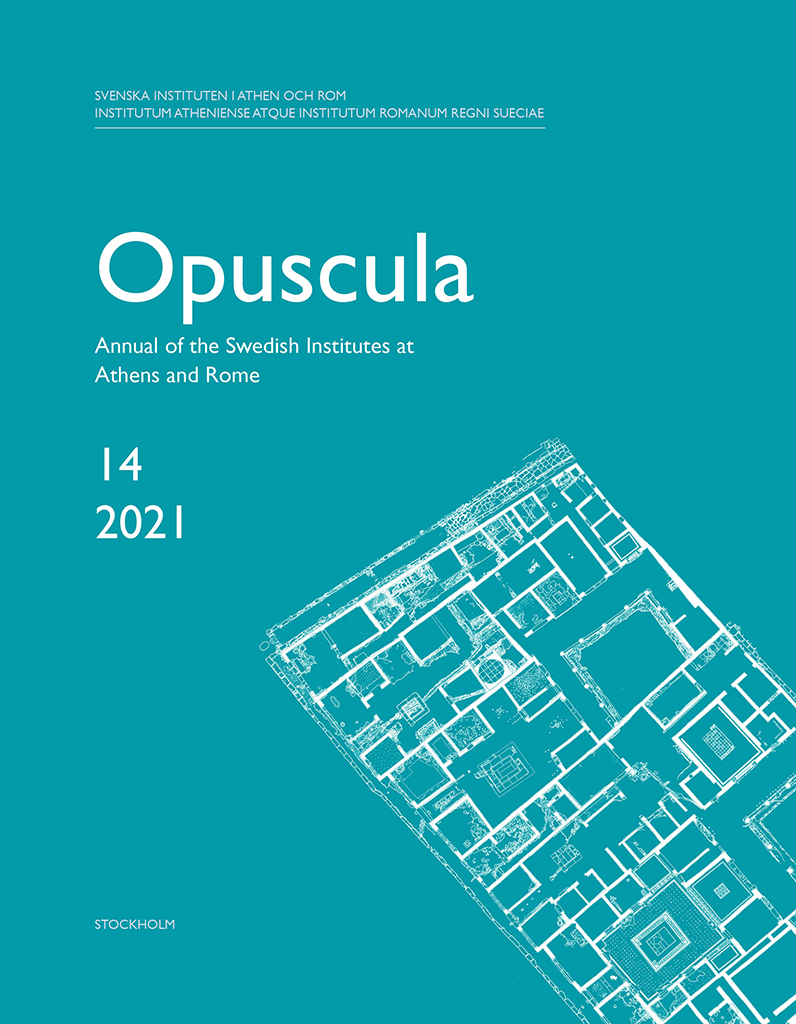Opuscula is published by the Swedish Institutes at Athens and Rome, with the aid of a grant from the Swedish Research Council. Distributed by Eddy.se AB. View journal at ERIH PLUS. All content available with open access. The key to Hermione? Notes on an inscribed monument By Jenny Wallensten (Swedish Institute at Athens, Greece) Abstract This article discusses an inscribed monument found during rescue excavations in the ancient city of Hermione. It provides an editio princeps for the one-word inscription and discusses the symbolism of its relief depiction of a temple key. The examination of the monument is followed by a discussion proposing a new perspective on how to approach the religious milieu of ancient Hermione. Bibliographical information Jenny Wallensten, ’The key to Hermione? Notes on an inscribed monument’, Opuscula. Annual of the Swedish Institutes at Athens and Rome (OpAthRom) 14, Stockholm 2021, 169-180. ISSN: 2000-0898. ISBN: 978-91-977799-3-7. Softcover, 478 pages. https://doi.org/10.30549/opathrom-14-10 Hermione. A Greek cityscape and its people The section on Hermione, published in OpAthRom 14, comprises six articles: Alcestis Papadimitriou | An ancient cityscape and its people: A study of ancient Hermione. Introductory remarks on historical sources and visible remains, archaeological research and prospects (pp. 65-76) Henrik Gerding | The topography of Hermione—A preliminary…
Opuscula is published by the Swedish Institutes at Athens and Rome, with the aid of a grant from the Swedish Research Council. Distributed by Eddy.se AB. View journal at ERIH PLUS. All content available with open access. The topography of Hermione—A preliminary outline By Henrik Gerding (Lund University, Sweden) Abstract The preliminary results of a survey of ancient Hermione (epichoric Hermion) are presented in this paper. The survey was conducted during three short campaigns over the period 2015–2017, and focused on the urban layout and development of the ancient city. Because the ancient city area more or less coincides with modern Ermioni, the investigation was mainly restricted to the documentation and analysis of architectural remains that were both still visible above ground and accessible. However, the report also includes a thorough re-evaluation of previous scholarship, taking into consideration remains that are no longer visible. The author identifies three questions of particular interest, relating to the exact location, extent, and potential relocation of the ancient city, and points to the lack of a coherent interpretation. On the basis of present data, the author proposes that Hermione was indeed relocated to a new site, less than 1 km away from its original…

